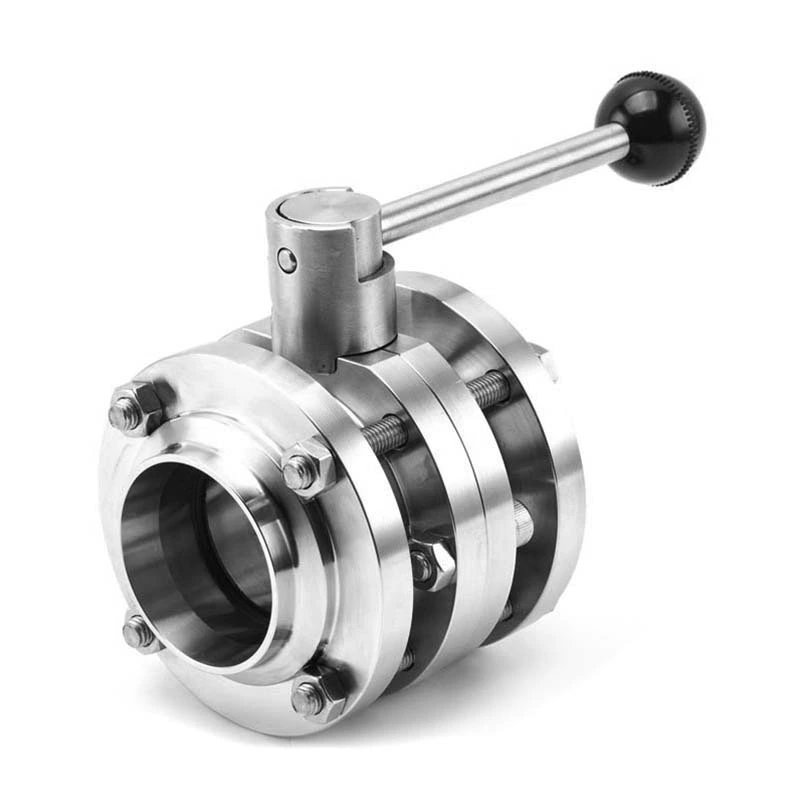Sanitary Butterfly Valve Specifications
I. Introduction
In industrial fluid systems, valves play a vital role, controlling the flow, pressure, and direction of fluids. Butterfly valves, as a common type of valve, are widely used due to their simple structure, small size, light weight, quick opening and closing, labor-saving, low fluid resistance, and good regulating performance. This article will introduce in detail the specifications and features of flange butterfly valves 341 and 371 and their application areas.
II. Specifications of Sanitary Butterfly Valve
1. Structure and application
Flange butterfly valve 341 is a butterfly valve connected by flanges. Its opening and closing part is a disc-shaped butterfly plate that rotates around its own axis in the valve body to achieve opening and closing or regulating functions. This valve is suitable for opening and closing or regulating pipelines such as water supply and drainage, high-rise buildings, fire protection, petroleum, chemical, pharmaceutical, and food.
2. Features
(1) Compact structure, small size, light weight, easy operation, and convenient installation and maintenance.
(2) The use of a full-axis structure makes the butterfly plate have high strength and can withstand large pressure and impact.
(3) Large flow area, small flow resistance, energy saving, and help improve system efficiency.
(4) Good sealing performance, using a multi-level sealing structure to ensure that the valve is leak-free when closed.
(5) Excellent adjustment performance, can be sensitively adjusted within the range of 0~90° to meet the needs of different working conditions.
3. Material and pressure level
The material of flange butterfly valve 341 can be selected according to the use environment and medium properties, such as cast iron, cast steel, stainless steel, etc. At the same time, the valve has different pressure levels to adapt to pipeline systems with different pressure requirements.
4. Implementation standards and quality assurance
The flange butterfly valve 341 is produced in strict accordance with relevant national standards and industry specifications to ensure reliable product quality. Manufacturers usually provide a complete quality assurance system, including raw material inspection, production process control, finished product inspection and other links to ensure that each valve meets quality requirements.
3. Specifications of Flange Butterfly Valve 371
1. Structure and Application
The flange butterfly valve 371 is similar to the 341 in structure, and also uses flange connection and disc-shaped butterfly plate as the opening and closing parts. However, the 371 model has been optimized in some details to adapt to a wider range of application scenarios and higher performance requirements. This valve is also suitable for opening, closing or regulating use in pipelines such as water supply and drainage, high-rise buildings, fire protection, petroleum, chemical, pharmaceutical, and food.
2. Features
(1) In addition to having all the features of the 341 model, the 371 model has improved sealing performance, corrosion resistance and high temperature resistance.
(2) The seals are made of special materials, which improves the sealing performance and corrosion resistance of the valve and extends its service life.
(3) The structural design of the butterfly plate and valve body is optimized, which improves the high temperature resistance of the valve, enabling it to work normally in high temperature environments.
3. Material and Pressure Rating
Similar to the 341 model, the material of the flange butterfly valve 371 can also be selected according to the use environment and medium properties. This valve also offers a wider range of pressure ratings to meet the needs of high-pressure piping systems.
4. Implementation Standards and Quality Assurance
The flanged butterfly valve 371 is also manufactured in strict accordance with relevant national standards and industry specifications to ensure reliable product quality. The manufacturer implements more stringent quality assurance measures, including rigorous raw material screening, precise control of the production process, and comprehensive inspection of finished products.
IV. Conclusion
In summary, the flanged butterfly valves 341 and 371, as two common butterfly valve types, share certain similarities in structure and function. However, they differ in design details, performance, and application scenarios. Users should consider their actual needs and operating environment to select the most suitable valve model to ensure system operation and safety.
